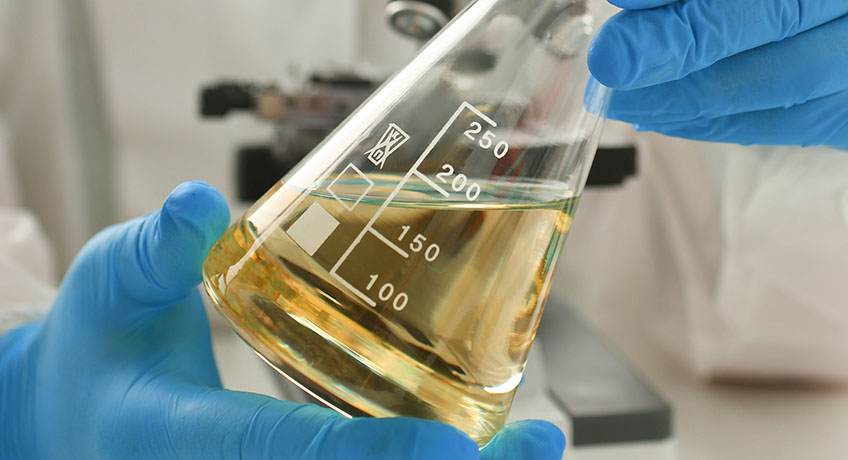NREL Tool Quickly Provides Answers for Chemical Reactions

In the same manner that pocket calculators made math faster and easier, a new machine-learning tool developed at the National Renewable Energy Laboratory (NREL) has significantly speeded up calculating the thermodynamics of chemical reactions.
Developed as part of the Department of Energy’s Co-Optimization of Fuels & Engines (Co-Optima) initiative, the new tool called A machine-Learning derived, Fast, Accurate Bond dissociation Enthalpy Tool (ALFABET) makes it possible for researchers to identify the most promising fuels for lower emissions and greater engine efficiency in seconds rather than days. ALFABET is freely available via an interactive website.
Bond dissociation enthalpy (BDE) is the energy required to break a chemical bond between atoms in organic compounds. Knowing the BDE of all of the bonds in a molecule allows researchers to predict its chemical reactions in order to determine its suitability for certain uses, such as in polymers or fuels including biofuels. To calculate the BDEs using traditional quantum mechanics methods requires resource-intensive simulations.
“With the modern machine-learning tools we’ve developed specifically for quantum chemical applications, we can get results of comparable accuracy quickly enough to be embedded in the ALFABET interactive website,” said Peter St. John, a chemical engineer at NREL and lead author of a newly published paper in Nature Communications, “Prediction of organic homolytic bond dissociation enthalpies at near chemical accuracy with sub-second computational cost.”
His co-authors are Yeonjoon Kim and Seonah Kim, both from NREL; and Yanfei Guan and Robert Paton from Colorado State University.
Nearly all chemical reactions of organic compounds involve the breaking and forming of covalent bonds. The cumulative difference between BDE values of all bonds broken and formed in a chemical reaction provides an estimate of the overall reaction enthalpy.
The commonly used method to calculate the BDE of a molecule is through density-functional theory (DFT). But, as the researchers noted in the paper, “this process is tedious, computationally expensive, and presents many opportunities to make calculation errors that result in large deviations from experimental measurements.”
Further, the researchers wrote, using DFT is not feasible when it comes to screening “thousands or millions of candidate structures” for potential applications.
ALFABET began with 42,577 “parent” molecules that consisted only of carbon, hydrogen, oxygen, and nitrogen atoms, which came from PubChem, a free chemistry database. DFT calculations—which took more than 80 days of computer processing time—yielded 290,664 unique BDEs. Using a predictive model developed using machine learning, the researchers were able to closely match the accuracy of DFT calculations.
“What we did was use DFT to generate a large database of BDE calculations, and then trained a surrogate model to predict those values,” St. John said. “With the machine learning model, we can get predictions so rapidly we can use them in the inner-loop of molecular design efforts.”
St. John said ALFABET is able to provide predictions that are used in development of detailed reaction mechanisms for combustion of biofuels, accelerating identification of the most promising fuels for reducing emissions and improving engine efficiency.
Co-Optima research focuses on how simultaneous innovations in fuels and engines can improve fuel economy and vehicle performance while also reducing emissions. Sponsored by the Department of Energy’s Office of Energy Efficiency’s Vehicle Technologies Office and Bioenergy Technologies Office, Co-Optima partners include nine national laboratories and more than 20 university and industry partners.
Learn more about the Co-Optima initiative and Co-Optima consortium partners.
Last Updated May 28, 2025
